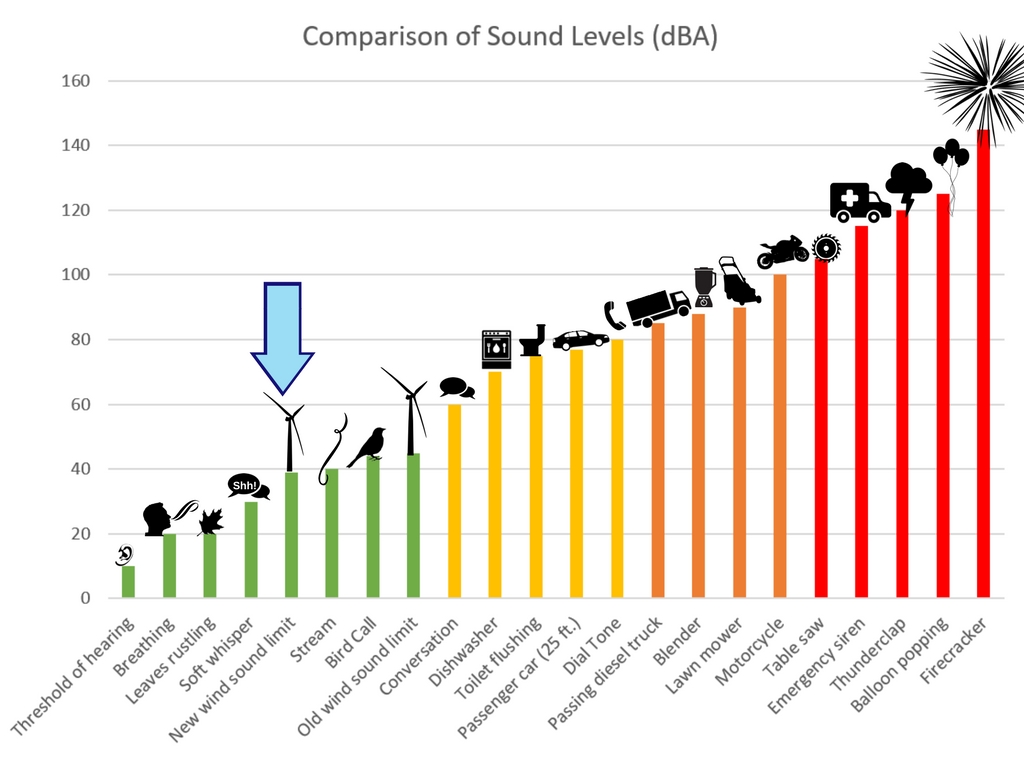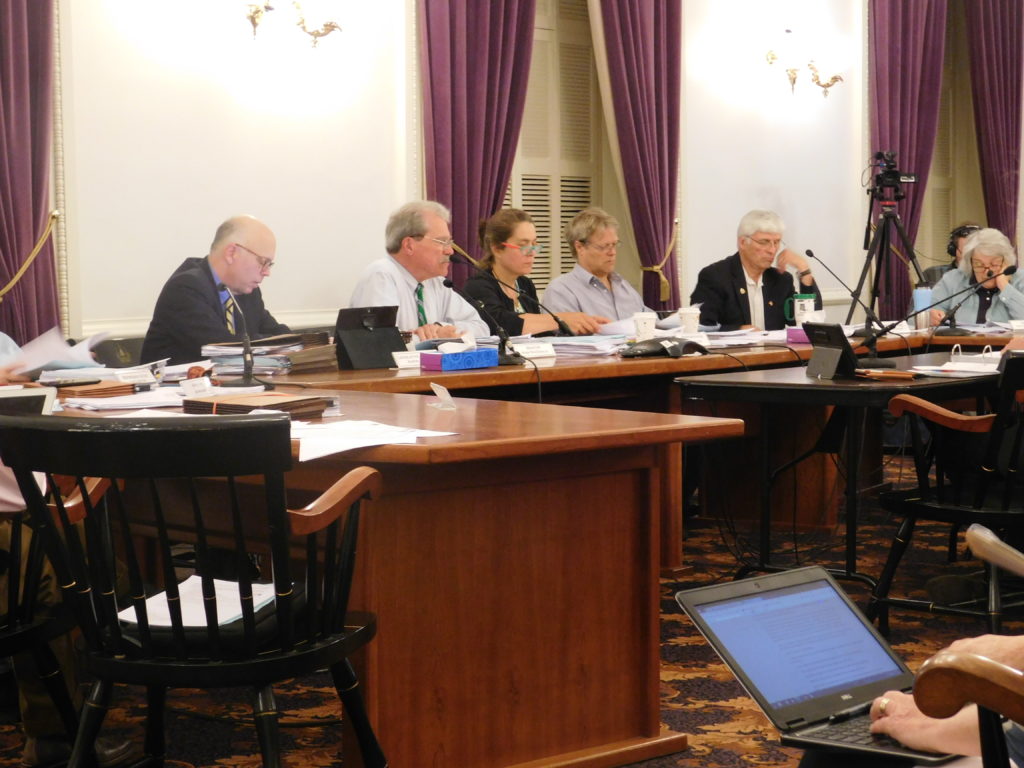On Thursday, the Legislative Committee on Administrative Rules (LCAR) voted 5-2 to approve the rules governing wind sound as proposed by the Public Utility Commission (PUC), imposing a sound restriction of 39 decibels at night and 42 during the day. This rule will likely make it impossible for any large wind projects to be approved or built while it is in place.
What do those sound levels mean?
Wind projects effectively have to be built to the lowest sound limit, so the 39 decibel limit is the restricting factor in this rule. The graph below shows what that sound level compares to.

Note that the decibel scale is logarithmic. An increase from 20 to 30 decibels is actually a 10x increase in the sound power.
Wind Sound and Public Health
As we’ve said time and time again throughout this proceeding, the issue of wind sound is not about public health. The sound standards at existing wind farms in Vermont are protective of public health. Studies used by the Public Utility Commission in this proceeding showed that 45 decibels at night (outside the home) was fully protective of health and sleep.
As an organization dedicated to working in the public interest, VPIRG takes questions of public health very seriously. Over the years we have worked on a wide variety of issues that affect the health and wellbeing of Vermonters. Each time we consider our position on a topic that relates to public health we thoroughly review the available research on the topic. When the evidence demonstrates real or likely public health impacts – as in our extensive work on the regulation of toxic chemicals – we strive to prevent or mitigate those impacts.
There are times, however, when we consider issues for which claims about potential public health impacts have been made, and those claims are clearly refuted by the weight of the scientific evidence. Sound from wind turbines is unequivocally one of those issues, and it would be irresponsible for us to advocate for restrictions on wind power based on alleged public health impacts when the available – and extensive – evidence demonstrates such an impact does not exist.
Given our work on climate issues, we are also very conscious that standards restricting or preventing the construction of renewables do not exist in a vacuum. If this rule ultimately prevents wind projects from being built, electricity demand will persist, and that demand will primarily be supplied by fossil fuel sources. There is overwhelming scientific evidence demonstrating that the extraction, refinement, and burning of fossil fuels causes clear and substantial public health impacts. When weighing the evidence on available energy sources, it is quite clear that any impacts from wind (related to sound or otherwise) are minimal when compared to non-renewable alternatives.
Your Voices Mattered
Hundreds of you spoke out over the past year to advocate for science based sound standards that would allow wind to continue to help us meet our renewable energy goals. Your voices were heard. Your advocacy resulted in the following improvements between the initial proposed rule from March 2017 and the final adopted rule:
- An increase in the nighttime sound limit from 35 decibels to 39 decibels.
- The removal of the arbitrary distance barrier of 10x the height of the turbine (approximately one mile). This setback requirement had no basis in acoustic science and would have prohibited projects even if sounds at nearby residences were predicted to be below the sound limit.
- The removal of two restrictions that would have made it even more difficult for projects to be approved:
- Turbines have an operating setting called Noise Reduced Operations, which helps them reduce up to 3 decibels of sound while operating, depending on the turbine. In an earlier draft of the rule, projects were prohibited from modeling the use of this tool to demonstrate how they could meet the sound limit, effectively reducing the sound limit by 3 decibels.
- A requirement that projects add an additional 2-3 decibel penalty onto the results of the model, again effectively reducing the sound limit by 2-3 decibels.
What’s Next
VPIRG is considering all of our options regarding this rule and the future of wind energy in the state of Vermont. We will provide updates as we move forward.
In the meantime, it is important that your legislators hear from you about how important this issue is. Please email them now to voice your concerns.
The following members of LCAR voted to approve the flawed PUC rules — allowing an effective ban on new wind projects in Vermont.
Representative Amy Sheldon, Vice-Chair: asheldon@leg.state.vt.us
Senator Joe Benning: jbenning@leg.state.vt.us
Representative Michael Yantachka: myantachka.dfa@gmail.com
Senator Michael Sirotkin: sirotkin.senate@gmail.com
Representative Linda Myers: lindakmyers@comcast.net
The following members voted against approving the rules:
Senator Mark MacDonald, Chair: mmacdonald@leg.state.vt.us
Representative Robin Chesnut-Tangerman: rchesnut-tangerman@leg.state.vt.us
The following member was absent for the vote:
Senator Ginny Lyons: vlyons@leg.state.vt.us

